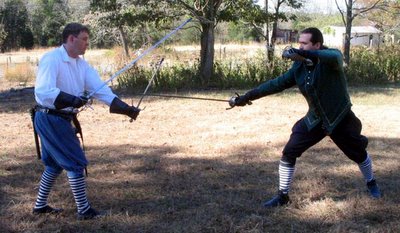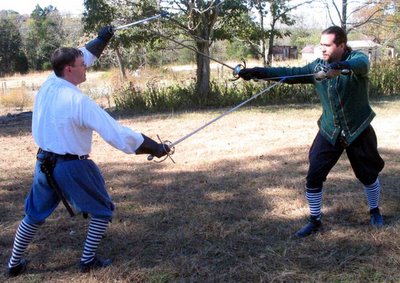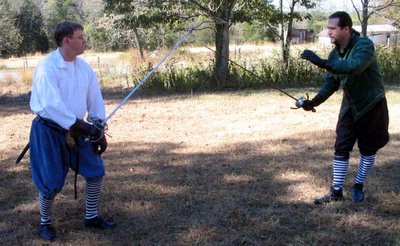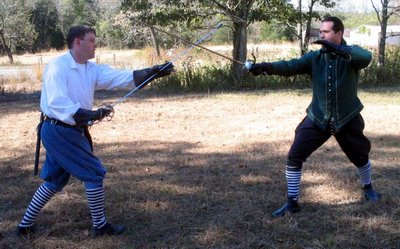Wednesday, November 30, 2005
Cthulu by Ego
Tuesday, November 29, 2005
Miracle of the Week
 AP, via Yahoo News, is reporting the latest miracle statue story. Apparently there’s a statue of the Virgin Mary at a church in Sacramento, CA that appears to be crying.
AP, via Yahoo News, is reporting the latest miracle statue story. Apparently there’s a statue of the Virgin Mary at a church in Sacramento, CA that appears to be crying.It was first noticed more than a week ago, when a priest at the Vietnamese Catholic Martyrs Church spotted a stain on the statue's face and wiped it away. Before Mass on Nov. 20, people again noticed a reddish substance near the eyes of the white concrete statue outside the small church, said Ky Truong, 56, a parishioner.The news article does make a couple of token statements about the frequency of such occurrences, also noting that they’re routinely found to be hoaxes or natural events.
Thousands of such incidents are reported around the world each year, though many turn out to be hoaxes or natural phenomena.Reverend James Murphy, minister of the mother church of the diocese, is also responding pretty calmly.
For people individually seeing things through the eyes of faith, something like
this can be meaningful. As for whether it is supernatural or a miracle, normally
these incidences are not. Miracles are possible, of course.
Some parishioners, of course, are quick to assume that this event is a miracle, resulting in these credulous comments…
There's a big event in the future — earthquake, flood, a disease…We're very sad.I’d say it’s far more likely that this concrete statue has an iron or steel framework inside, and rusty fluid is leaking out through a crack. A finely-detailed area like the eye is just the sort of place where moisture might accumulate and help any iron in the statue to oxidize. I’m sure that if the church allows some reputable scientists to examine the statue, they’ll quickly find a perfectly natural explanation.
I think that it's incredible. It's a miracle. Why is she doing it? Is it something bothering her?
It's a call for us to change ourselves, to love one another.
I don't know how to express what I'm feeling. Since religion is the mother of believing, then I believe.
That won’t stop the believers from calling it a miracle, of course, and I don’t suppose there’s any reason they should. If believing that God set this statue to crying makes them feel better, good for them. If it motivates them to do something to benefit their fellow human beings, as in the third comment above, even better. On the other hand, if it leads them to depression because they fear an impending disaster (see the first comment), maybe it’s not good at all. Disasters happen all the time, so it will be easy to find one to connect to this event.
I’m trying to be open-minded about this. Just a quick glance at the photo told me I was probably looking at a rust stain, but any believer would tell me that God could cause a rust stain anytime and any place that He pleased. From a grand perspective, though, I’m not sure what we should make of this incident even if it turns out to be supernatural. I think that God should be able to come up with something more definitive if he really wants to send a message. It’s like putting up a blank road sign; if you can’t even tell whether it’s a warning or an instruction, what good is it?
Monday, November 28, 2005
WoW: Wailing Caverns

You enter Wailing Caverns through a cave in the Lushwater Oasis. Much like the Deadmines on the Alliance side of the ocean, you’ll have to wander through "public" caves populated with elite monsters (mostly raptors) in search of the entrance to the Instance Dungeon itself.
Monsters in the Wailing Caverns tend to average around level 19, but naturally almost all of them are elite monsters, making them much tougher than ordinary monsters of their level. I ventured into the mines with a party of four players:
- Haokan (me), a level 23 Shaman specialized in healing
- Danicor (the party leader), a level 24 Shaman specialized in close combat
- Junasaz, a level 20 Rogue
- Ghostblade, a level 20 Hunter
As usual, not every member of the party was equally competent. In my role as primary healer, I had little trouble keeping up with the healing duties most of the time; Danicor did a good job of holding the attention of the monsters, and Junasaz did a good job of crowd control by sapping (stunning) some members. Ghostblade, on the other hand, had a tendency to start fights before the rest of the party was ready and to draw extra monsters into ongoing fights. He also tended to be a "ninja looter", trying to get treasure that he didn’t really need, so Danicor took direct control of loot distribution. Even then, Ghostblade couldn’t seem to follow directions when told to "/roll" for a special item: generating a random number in a "roll off" with the highest number receiving the item.
Despite two wipeouts, though, the party functioned as a pretty effective monster terminating machine most of the time. I can’t really give good guidance about where to go in the Caverns, since I was just following Danicor most of the time and not keeping track of the path.
I can tell you that you will spend a lot of time fighting the Druids of the Fang. These are night elf druids who will invariably have escorts of some kind around them, be they raptors, serpents, or elementals. You can generally expect to have to fight one druid and two escorts in a given encounter. When dealing with these groups, we generally sent Junasaz to sap the druid, pounded down the escorts, and then turned on the now-lonely druid. Druids of the Fang typically cast the Wrath spell a few times and then change into a fighting form. Their fighting form is serpentine rather than the bear or cat form of player druids, but they don’t seem to have any special advantages because of it.
There are a lot of quests available for Wailing Caverns, so it’s a good idea to make sure you’ve shared quests with your traveling companions before entering the instance. I’ve still got incomplete quests in there, so hopefully I’ll go back soon and get more screencaps.
$120,000 Placebo
Sons Pay $119,400 for Ginseng to Help Mom$120,000 for some old plant roots; I think the lady could have had knee replacement surgery repeatedly for that much money. A search of PubMed for “ginseng healing” only turned up 14 articles, none of which indicated any significant benefits for any kind of knee or joint ailment. Some of the studies indicate that it may have some benefit for the regeneration of damaged blood vessels, and there are some studies showing potential “quality of life” benefits when ginseng is used as a dietary supplement, but there’s absolutely nothing to suggest that ginseng will provide any significant benefit to this lady’s condition.
SEOUL, South Korea - A family hoping to cure their mother's weak knees bid nearly $120,000 at an auction for a set of wild ginseng roots that included specimens 110 years old.
The package of six roots sold for 125 million won ($119,400), Yonhap news agency reported Sunday, citing the Korea Wild Ginseng Appraisal Association. An entrepreneur and his brothers placed the winning bid to help cure their mother's ailing knees.
Ginseng is highly valued in Korea for its potent healing benefits.
So we have $120,000 that could have been used for modern medical treatment with documentable benefits wasted on “alternative therapy” instead. The mind boggles.
Wednesday, November 23, 2005
Another Shameless Endorsement of the Absurd
Based on the adventures of real-life psychic and crime solver Allison Dubois (portrayed by Emmy-winner Patricia Arquette), the show has neatly positioned itself as both an intriguing paranormal mystery show and an above-average family drama. The relationship between Dubois and her husband Joe (Jake Weber) occupies center stage, as he tries to cope with having a wife that not only sees the future and communicates with dead people, but also frequently gets called on by the district attorney’s office at all hours of the day or night.Real-life psychic and crime solver? Can we please cut back on the mindless credulity a little bit? Yes, Allison Dubois is a real person, but she has yet to do anything to conclusively demonstrate that she has psychic abilities.
Supposedly she sent her psychic impressions about crimes to an assortment of law enforcement agencies around the country, and the Texas Rangers contacted her shortly thereafter to assist them with a missing persons case, but the Texas Rangers deny her claim.
She also claims to have helped the Glendale, AZ police department, but they also deny ever having worked with her.
Indeed, as far as I can tell, no law enforcement agency has ever called her for assistance, and she has never contributed any useful information to a case, so can we please stop shamelessly promoting her? If you’re going to essentially advertise for her, you should at least send her a bill.
ID’s True Colors Showing Again
Why poke a stick in somebody’s eye if you don’t have to? If you’re going to have an intelligent design course and call it mythology, I think in the very least it’s a slap in the face to every Judeo-Christian religion that’s out there.Did somebody at the Discovery Institute forget to go over the Incompetent Design talking points with Senator O’Connor? ID is supposed to a completely scientific theory, isn’t it? I thought that it’s proponents claimed that there was nothing religious about it at all.
Why, then, is comparing ID to mythology a slap in the face to Jews and Christians?
As usual, the ID movement claim to be non-religious one moment and then show their true colors the next: ID is just religion masquerading as science.
Tuesday, November 22, 2005
Crystal Ball

I must say that I was rather remiss, in that I never did catch the name of the lord who was teaching the English Country Dance class that I joined. Bad Runolfr! He taught Chestnut, Hyde Park, and Jenny Pluck Pears. Chestnut and Hyde Park are fairly easy dances for three and four couples, respectively, that I had not danced previously, and they were the reasons that I took the class. I thought Jenny Pluck Pears was a no-brainer, but it turns out that the vagaries of Inter-Kingdom variations caught me there. In Meridies we do a little trick with the chorus that isn’t done in the Middle Kingdom, so I caused a minor train-wreck on the first chorus. Honestly, I think the Meridien variation is more fun, but a quick peek into a nearby copy of Playford’s The English Dancing Master showed it to be less authentic. That said, I’ll have to add that to my list of dances to discuss before the music starts when I’m dancing in a mixed-kingdom set.
After lunch I took Lady Tsire’s class on pavans and galliards. I’m no stranger to pavans, and they’re generally so slow that you can figure out what to do from cues or hints from your partner as long as you know the basic pavan steps. Documentation-wise, pavans are more of a style than a specific series of steps; detailed choreographies are mostly SCA inventions. Lady Tsire taught Entre Courante, Carolingian Pavan, and the Earl of Salisbury Pavan, which are all SCA choreographies that vary in their stylistic authenticity. Entre Courante was the only one that was new to me, but I was in Lady Tsire’s class for the galliard segment, anyway (that and to chat with Tsire, who is just a bundle of fun). Galliards, like pavans, are a style rather than a specific choreography, and there aren’t any specific SCA arrangements that I know of, possibly because galliards are so... aerobic. Nonetheless, I wanted to refresh myself on galliards, and I found that a galliard set was planned for the ball following the Carolingian Pavan (historically, a galliard often follows immediately after a pavan).
My final class of the day was Master Sion’s 15th-century Italian class. He taught Leoncello Vecchio, Villanella, and Anello. Leoncello Vecchio and Villanella were both new to me, and they’re also good because they’re not "big set" dances, just any number of couples dancing as they want (which usually means dancing in a "race track" circle). I have to check my music collection to see if I have appropriate recordings. If I do, my students have something to look forward to (or fear, as the case may be).
We were bad kids and skipped the last class period to go back to our hotel, rest, swim a bit in the pool, and change into our evening garb. We attended feast at this event, which had good and bad points. On the good side, they had live entertainment which was actually quite entertaining. On the down side, the feast itself was un-thrilling. According to several regulars, that’s the usual situation, so we’ll be skipping feast on any future visits.
Following feast was a Baronial court that lead directly into the ball. On the upside for the ball, there are a lot of dancers of both genders in the hall, and the great majority know what they’re doing. On the downside, a basketball court is not the most romantic venue for a renaissance dance, and there was no real effort to try to dress it up.
Crystal Ball is arranged in six sets of about ten dances each. That’s a huge dance list. I’m a major dance geek, but it was after midnight before the third set was over, and I had to drive eight hours the next day, so I didn’t make it to the fourth set. Even half of Crystal Ball is more dancing than you’re like to see in Meridies at anything but Saltare.
EDIT: The missing camera reappeared. Fjorleif was opening the car trunk, and it practically fell at her feet. Apparently it somehow got caught in a cavity of the trunk lid during our drive to the hotel. Anyway, we have no pictures of the ball itself, but we had one picture of the Scottish Country Dance class (seen at the top, now) and a couple of short videos that I'll have to host somewhere eventually.
This pretty much concludes my 2005 (Anno Societatus XL) event year. My next planned event is Mid-Winter Arts & Sciences in the Barony of South Downs in February.
Wednesday, November 16, 2005
Life as Wine Yeast
Tuesday, November 15, 2005
Tom Toles on Kansas

It's apparently well-loved by scientific bloggers everywhere. I hope I'm not getting into a serious copyright infringement situation (although I think Tom has already made all the money he's likely to make on this particular cartoon).
Monday, November 14, 2005
Unusual Link of the Day
Fighter's Collegium Aftermath
My class went alright, I guess. We didn't get as far as I wanted to go, since everybody scattered to find their armor when they found out that this was meant to be a practical, weapons-on sort of class. That delayed the start by almost half an hour, so we never got past the single-rapier portion of the class. C'est la vie.
The post-feast revel was predictably minimal; there were never more than six dancers, and I think we only got through five or six dances at most. Knights are supposed to be well-grounded in dance, but that's a "requirement" that obviously isn't enforced with any rigor. C'est la vie, aussi. (Ysabel is probably going to chastise me for my bad use of French when she reads this... I plead lack of practice.)
In better news, I am now apprenticed, although the formalities probably won't take place until Midwinter Arts and Sciences in the Barony of South Downs. I'll not announce the name of my gracious Laurel until things are official, but anyone who knows me personally should be able to guess in an eyeblink.
Next weekend I'll be at Crystal Ball, and I hope to see a few of my readers there. After that, I should have a couple of months off from eventing.
Wednesday, November 09, 2005
As If It Would Prove Anything
I presume that Mr. Dougherty is taking this "bold" step in response to allegations that he attempted a similar claim against the town visitor's center in Nederland, CO, in 1976. At least one record -- belonging to the Colorado Bureau of Investigation -- shows that Dougherty plead guilty to filing a false police report in that incident.
Whether Dougherty could pass a polygraph test is immaterial, though. Polygraph test results are not admissable in court, and with good reason. The techniques for passing a polygraph test -- whether you're lying or not -- are freely available on the internet. Offering to take a polygraph test just gives the illusion of offended sincerity; it does nothing to demonstrate the truth of a claim.
A Resounding Defeat for IDiocy
Apparently the citizens of Dover quickly got tired of their school board making them a laughing stock in the public media, because they replaced all eight of the incumbents with Democratic candidates who are against introducing ID into science classes.
You can read about it in Yahoo News.
On the other hand, things are going to the dogs in Kansas, but we really knew that was coming. The Kansas board is currently packed 6-4 with IDiots, but several of those IDiots will be up for re-election next November. Hopefully their IDiotic science standards won't do too much damage over the next twelve months, and the good citizens of Kansas will toss the IDiots off their school board, as well.
Swetnam Fencing 5: Sword and Dagger Inside Parry
Instead, you should bring your dagger hilt down and to the inside while keeping the point high. This will push the attack away to your right.

At the same time, raise your sword hilt until it's over your head, with your knuckles turned upward, and thrust down at your opponent's head, body, or sword arm.

Swetnam calls this thrust a mountanto, and it's just about his favorite attack. You'll need to practice it quite a bit, though, as it's not really a natural motion, and you can easily tangle yourself up if you haven't got the hang of it. When you get it right, though, it does work very well.
Back to Part 1
Tuesday, November 08, 2005
Stop that! It's Silly!
Monday, November 07, 2005
Swetnam Fencing 4: Rapier & Dagger Guard and High Parry
 The rapier and dagger are Joseph Swetnam's favorite weapon combination; his next favorite weapon is the staff, which he promised to write about in a second book which was either never published or lost to history.
The rapier and dagger are Joseph Swetnam's favorite weapon combination; his next favorite weapon is the staff, which he promised to write about in a second book which was either never published or lost to history.As with most fencing "masters" of the time, Swetnam regarded the dagger primarily as a defensive tool. It's lacks the reach to use for a serious offense -- particularly at the "true distance" that Swetnam recommends -- but it can hold a sword point at bay reasonably well while you attack with your own sword.
As with the single rapier, Swetnam suggests a pretty closed stance with most of your weight on your right (lead) foot. You then lean forward as far as you reasonably can without being unbalanced. Awkward at first, yes, but this puts your legs so far back that an attack directed at them is pretty futile.
Hold your sword low and slightly to your side with the point up in front of you. Hold your dagger straight out high and horizontal with the tip very close to your sword point. This position concentrates your defenses around your head -- a very sensible thing to do when you've stuck your head out as far as the basic stance puts it. You've made your head a very attractive target, but as we saw before, Swetnam likes to be able to predict where the enemy will strike.
The close points protect you from a "wrist blow", a quick downward cut to your face thrown from the wrist. Whether you have much to worry about from such attacks in the SCA depends on your local Kingdom rules and whether they allow tip cuts. You might see people trying to quickly drop the point and thrust to your face, too, so it's best to prepare for such an attack.

The basic defense against a thrust to your face is to slip your dagger under the attacking sword and lift it up. Naturally you should take this opportunity to simultaneously deliver a counter-thrust of your own.
I'll be discussing more of the basic sword and dagger defenses and ripostes as the week continues.
Part 5
Friday, November 04, 2005
Bad Batman Science
It does not have good science. Oh, there are good bits here and there. The Batmobile, for instance, is a real vehicle built specifically for the movie, and it really can jump a short distance without a ramp (I’m sure you can look up details online if you’re interested).
It’s the villain’s master plan that’s the real culprit. If you haven’t seen the movie yet (where have you been hiding?) and you don’t want to know the details, you should stop reading this article right now.
The dastardly villain, Ra’s Al-Ghul, has teamed with the corrupt Dr. Crane (aka the Scarecrow) to poison Gotham City’s water supply with a drug that causes irrational fear. The plan is to destroy Gotham by driving the citizens mad with fear and letting them tear the city apart.
There’s a major plot point in the way, though: the fear drug only works when inhaled. That’s why the population hasn’t already gone mad from drinking the tainted water. To complete their evil plan, the villains have stolen a high-powered microwave generator to rapidly boil the city water supply into cloud of toxic steam.
Herein lie two problems. First, why hasn’t Gotham City been overrun by cases of people who have gone crazy after taking a hot shower, boiling a pot of spaghetti, making a pot of tea, etc. There are numerous mundane situations that would expose a person to tainted water vapor, so keeping this evil plan a secret wouldn’t be feasible.
The second and more obvious problem is the microwave machine that they plan to use to vaporize the water. They stand right next to it when they turn it on, causing water in nearby pipes to boil into steam, bringing madness to a portion of the city. Note that human bodies are roughly 80% water: anyone standing next to this machine when it was activated would promptly explode! Nonetheless, intact human bodies remain in close proximity to the microwave machine as the villains try to transport it – running all the time – to the central hub of Gotham City’s water distribution system.
So there are two huge realism issues that you’re going to have to ignore when watching Batman Begins. That’s not so bad really, as long as you know that you’re deliberately suspending disbelief on these issues and not accepting this chain of events as scientifically plausible.
Thursday, November 03, 2005
Swetnam Fencing 3: Single Rapier Compass-Step Void
Another of his methods of trying to control his opponent's behavior is to reverse his stance. Many people use this stance because they intend to use a hand parry to get control of the opposing blade before or during their attack. Swetnam's primary objective, however, is to offer the left shoulder as bait.
 When your opponent thrusts at your apparently open left shoulder, you step back with your left foot to pull your shoulder back out of range. At the same time you thrust into your opponent's sword arm, which he has conveniently put out into range for you. As usual, I tend to add a hand parry for good measure and to keep my opponent's blade under control as much as possible.
When your opponent thrusts at your apparently open left shoulder, you step back with your left foot to pull your shoulder back out of range. At the same time you thrust into your opponent's sword arm, which he has conveniently put out into range for you. As usual, I tend to add a hand parry for good measure and to keep my opponent's blade under control as much as possible. On the remote chance you haven't figured this out already, all of my instructions assume that you're a right-handed fighter; you should reverse all of the left-right directions I've been giving if you're holding the sword in your left hand. In this, I'm just following Swetnam's convention, as well as giving instructions the way the majority of fencers will use them.
On the remote chance you haven't figured this out already, all of my instructions assume that you're a right-handed fighter; you should reverse all of the left-right directions I've been giving if you're holding the sword in your left hand. In this, I'm just following Swetnam's convention, as well as giving instructions the way the majority of fencers will use them.Part 4
Wednesday, November 02, 2005
Swetnam Fencing 2: Single Rapier Outside Parry
The counter for an outside thrust is to keep your hilt out to the right and place your left hand on the blade of your sword. Using your left hand, you gain extra leverage to position your blade to parry the attack.
 With your hand on your blade and your opponent's blade under your control, you can step forward to deliver your counterthrust. Again, you get a convenient opportunity to grip your opponent's blade so that you can keep it under control while you launch your attack.
With your hand on your blade and your opponent's blade under your control, you can step forward to deliver your counterthrust. Again, you get a convenient opportunity to grip your opponent's blade so that you can keep it under control while you launch your attack. In practice, we've discovered that you can use this parry offensively. With your left hand helping to control your blade, you can deliver a very strong beat against your opponent's blade to throw it off target without letting your own point wander off target.
In practice, we've discovered that you can use this parry offensively. With your left hand helping to control your blade, you can deliver a very strong beat against your opponent's blade to throw it off target without letting your own point wander off target.Part 3
